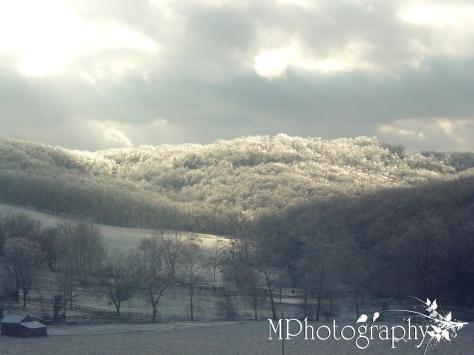Winter has finally hit! With as much as 6 feet of snow in Buffalo, NY to barely an inch in Springfield, MO, winter is in full effect. Temperatures have reached an all time low for this time of year. Last year, on November 17th it was 57 degrees….this year, a record breaking 9 degrees in the town of Springfield. But, enough with the weather report…
I’m writing this blog post as a reminder to keep you and your livestock warm. This winter is predicted to be a bad one, so you want to make sure you’re stocked up on supplies. I know all too well how hard it is to leave the warmth of your home to go out for feeding, but feeding your livestock on time is just another part of what is going to help keep them warm this winter! The LOWEST temperature livestock can withstand without any additional source of heat or energy is 20 degrees, so you’re going to need to add additional energy (hay or grain, something with glucosamine and soy bean mill) to their diet to ensure that they have the energy to keep their body warm. All dietary changes with the seasons should be made gradually.
Also, make sure you’ve purchased stock tank heaters, or base water heaters to keep your water from freezing. The average horse will drink 5-10 gallons of water a day, and cattle up to 8-15 gallons a day, so you want to make sure that they’re able to access the water they need. If the livestock are consuming water that is not 37 degrees or above, it’s going to lower their body temperature, making it harder for them to stay warm in the freezing temperatures. If you’re not wanting to purchase a stock tank heater, be sure that fresh water is provided several times a day.
Blanketing your livestock (mostly for horses) can become a problem if moisture builds up under the blanket. Horses naturally insulate themselves, and are made to last in cold temperatures. They naturally regulate their own temperatures, so blanketing them throws off their whole natural cycle, causing them to overheat in the places covered by the blanket. If you do decide to blanket your livestock, you’ll need to check on them frequently to make sure that the blanket stays dry. If the sun comes out, pull the blanket and let them roll and dry off.
As for shelter goes, livestock are able to last in low temperatures if you’re providing the energy they need to keep their body temperature up, but shelter from wind and rain is essential in the overall health of your livestock. Horses are thin skinned, so an adequate shelter really helps when they have a hard time staying warm. Be careful leaving your horse shod in the winter. If the shoe gets cold, water and dirt could freeze and form a ball on the hoof, making it hard for them to walk. With winter weather, there is likely to be mud, so be sure that you keep dry bedding down at all times to help insulate animals from the cold ground. Also, make sure your shelter is spacious enough for all livestock to stay warm.
As for yourself, LAYERS! You might look like a marshmallow, but long underwear, insulated bibs, boots, wool socks, coat, gloves, and hat, will keep you from getting too cold. If you have a larger herd, and feeding takes a long time, keep a warm cup of coffee or hot chocolate in your truck.
It’s the most wonderful time of the year, so stay warm!

